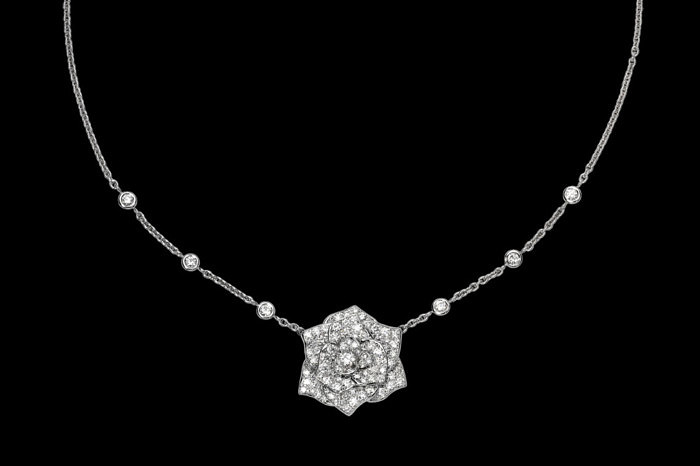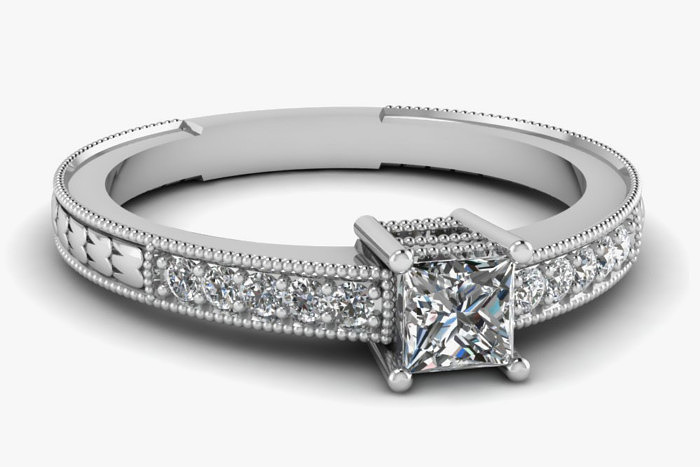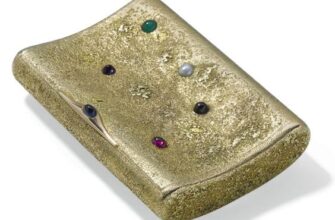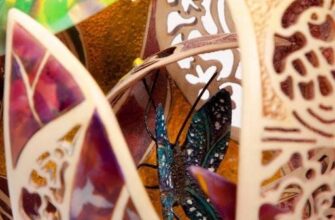How much do we know about the most coveted of precious metals? And how much of this knowledge is true? Experts tell the most important thing about gold.
It is not known who first came up with the idea of decorating oneself with gold and precious stones, but it is quite obvious that this idea arose exactly at the moment when a sense of beauty woke up in a person. Today, when buying jewelry, we are guided not only by our own sense of beauty, but also by fashion trends, advice from relatives and recommendations from specialists.
However, what if all you know about gold is numerous stereotypes and conjectures, echoes of the information vacuum from the past. Let's try to debunk the prevailing myths and figure out what gold really is.
Myth #1: Gold is the most durable precious metal.
What we see in jewelry stores is not really pure gold, but an alloy of metals containing only a fraction of this noble mineral. Pure gold has a soft and plastic structure and is used only in architecture and arts and crafts, for example, in the form of leaf coating for church domes.
In some countries, gold is added to drinks, desserts are decorated with gold flakes. In jewelry, the content of pure gold is easily outstripped by the value of the sample. The most popular 585th test indicates that the metal contains 58,5% pure gold.
Myth #2: Real gold is yellow gold.

Myths about the golden fleece, the legend of the treasury of Tutankhamun forever fixed the image of the precious metal of the color of the sun in gold. Indeed, the color of pure gold is bright yellow. Only in the 20th century did scientists begin to use ligatures that could change the shade of the precious metal. A ligature is an admixture of a certain metal added to a piece of jewelry to improve its aesthetic and physical properties. Remember the Soviet era, when jewelry in warm colors was in great demand - and still our mothers and grandmothers wear red gold wedding rings.
Today, the experiences of jewelers are much more diverse and, if desired, you can find gold of various colors. We already know that platinum, palladium and nickel are responsible for the white shade of gold, cobalt is responsible for the red, and copper gives yellow and orange. Rose gold is obtained from a combination of gold, copper and silver, while black gold is obtained from a combination of gold, cobalt and chromium.
In addition, do not forget that almost any desired shade can be given to gold by coating with colored rhodium.
Gold of a non-standard color can be made, but such products will turn out to be fragile and not so easy to wear. If purple or blue gold is dropped on a hard surface, it will shatter. Alternatively, you can make a composite jewelry, part of which will be colored gold, and the other part will be classic, white or yellow.
The ligature also affects the physico-chemical properties of the jewelry. Copper and silver are almost always added to the composition of the alloy, because they are in the same chemical group as gold and improve the technological characteristics of the product, giving it excellent polishability, lasting shine and color.
Modern scientists continue to struggle to create an innovative ligature that would make it possible to make a durable product with a luxurious design, original color and aristocratic radiance. But since there are no established standards and norms for ligatures, each production has its own secrets of technological cuisine.
The choice of certain components of the additive for gold jewelry is largely due to the company's objectives: some need to minimize production costs, while others are important for the aesthetic aspect. For example, palladium used as an additive is more workable, it is softer and more ductile, and therefore easier to manufacture, while nickel is a harder material, although it gives no less brilliance and whiteness to the product.
Myth No. 3. White gold is more expensive than "regular"

White gold is not "nobler" than yellow, since the value of the metal is determined, first of all, by its breakdown, and not by its shade. The higher the standard, the more pure gold is contained in the jewelry. Thus, white and yellow gold 585 are absolutely equivalent. The white shade of gold is obtained by adding palladium or nickel to the chemical formula. The alloy of such gold has a barely noticeable yellowish tint, and to remove it, jewelry is additionally coated with rhodium.
And yet, in one case, white gold can surpass its "brother" in price. If palladium is used as an alloy, then the alloy is more expensive than an alloy with a nickel alloy, since platinum and palladium are precious metals themselves. Palladium gives the alloy extra strength and a noble pale hue. The resulting metal has high ductility, does not lose color when heated, and has a more intense luster after final processing.
Each manufacturer sets its own volume of the palladium component in gold jewelry. Sufficiently good mechanical characteristics, gloss and rigidity of the structure provides a content of 10,5%. A more "budget" version of white gold includes nickel, copper and some zinc.
Among the latest technologies for producing high-quality gold items, one can note the use of carbon matrices: when an alloy of metals is driven onto a carbon lattice under high pressure. So, by the way, Swiss watches are produced. Gold treated with carbon technology is absolutely scratch-resistant and has a lasting luster.
Myth No. 4. Gold does not cause allergies.
It is believed that since gold does not oxidize, it cannot release decay products that provoke an allergic reaction. However, rejection of the body can be caused not by gold itself, but by one of the components of the alloy.
“I have not come across cases of allergy to gold in the medical literature. Or rather, allergies to pure gold. Allergic reactions of the body can be caused by metals, which, in addition to gold, are part of the jewelry alloy. For example, nickel. Also, local skin irritation can be provoked by stuck particles of cosmetics, household chemicals between links of chains and bracelets, elements of rings, ”says an allergist at the 21st Century Medical Center.
In connection with the allergenicity of nickel in the European Union in 2000, a ban was issued on the addition of this metal to white gold jewelry. One of the few companies that have abandoned nickel is EPL. Yakut diamonds”: despite the fact that the use of palladium increases the cost of the product, the manufacturer bears these costs, and they do not affect the final retail price of the product.
Myth #5: Diamonds can only be set in platinum.

Another widespread speculation, completely inconsistent with reality, but actively broadcast by representatives of the older generation. Platinum is a rather rare and expensive metal, characterized by the highest strength, which makes its use in jewelry quite difficult. Today, almost 90% of platinum is used in technical laboratories, chemical industry, science, and only a small part is used for jewelry.
It is much cheaper to make white gold using a palladium ligature than a platinum jewelry - with almost identical visual characteristics, the cost of a platinum product will cost much more. Compared to the hundreds of tons of gold mined, the amount of platinum on the jewelry market is negligible. It is simply profitable for jewelry companies to use gold for diamond inserts.
Today, a wide variety of gold alloys are used for diamond settings. However, the leading role is given to white gold. People like visual lightness, airiness, so they choose cold shades. White gold well reflects the "fire" of stones, filling the jewelry with a charming brilliance, emphasizing the perfect transparency of the diamond.









